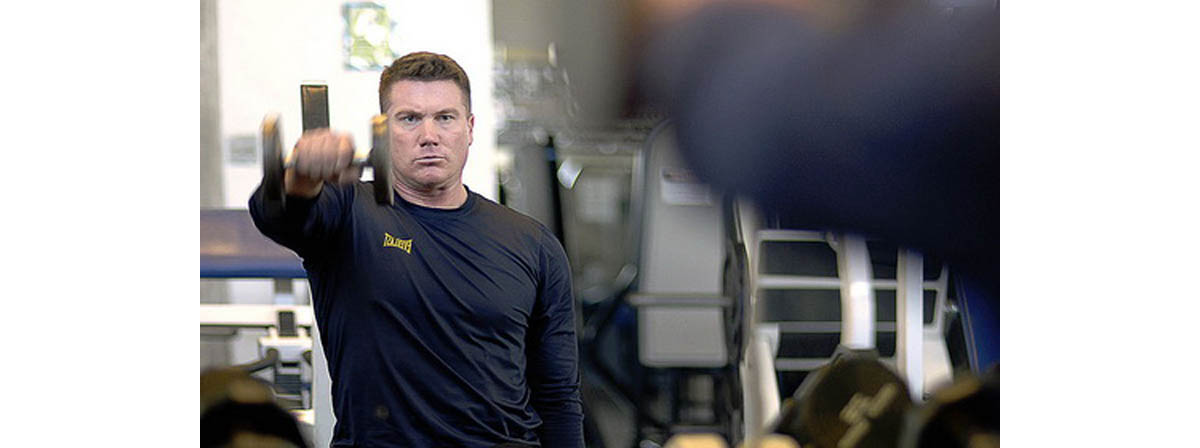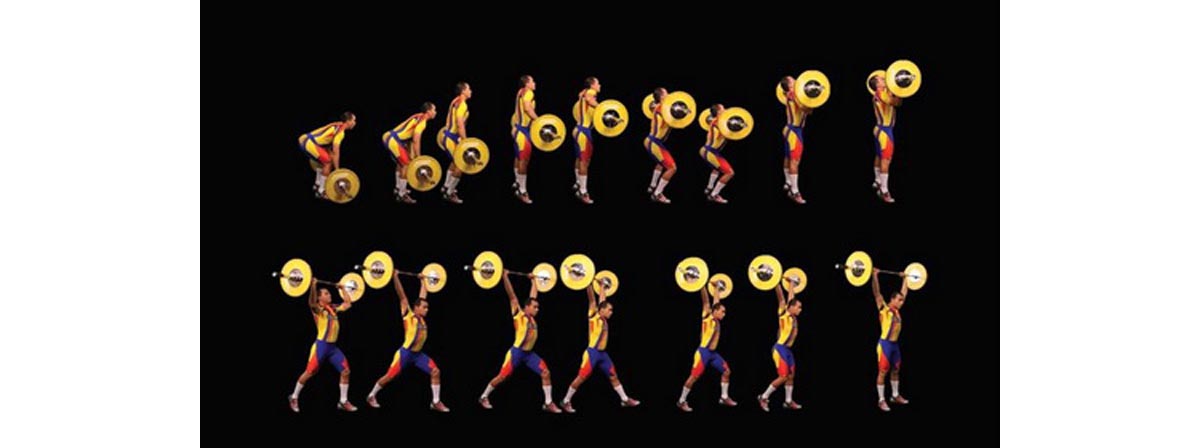Exercise that will help trigger your muscle growth and fat loss
Exercises that generate a serious amount of force are the best way to trigger muscle growth and the hormone cascade that leads to fat loss and other desirable benefits. By using the heaviest load you can, you’ll cause your body to produce more testosterone and human growth hormone. You’ll also benefit by learning a functional movement that you can carry over at least somewhat into everyday life. After all, if you’re moving significant loads it needs to be efficient so the movement has to be functional. That’s why big, heavy lifts like squats and deadlifts look like everyday movements cleaned up. When’s the last time you took hold of the end of the sofa and did a bicep curl with it? Exactly – those movements don’t carry over well, they don’t use a significant amount of the body’s muscle all at once and they don’t cause the same adaptive responses either.

There’s more though.
I know it’s supposed to be unsafe, but bear with me: lifting fast works for Olympic lifters, it works for powerlifters – just look a the Westside barbell programme, which involves strength days and speed days using the same lifts but different weights. And it can work for you too. Learning to accelerate a load safely can carry over into all kinds of sports – whether you’re batting or pitching in baseball, for instance, what you’re doing is accelerating a load. Force is mass times acceleration, so if you move a weight faster, your muscles do more work, and you get to practice moving fast and powerfully.
It’s a pretty bad idea to learn to do them from a book, though there are instructional books out there and some are pretty good. They need to be learned right, though, and that can take time.
What if there was a movement that was explosive, involved moving some really heavy weight and was relatively simple to learn?
Meet the power clean
The power clean is like an Olympic clean except you don’t squat under the bar (much). Let me explain.
To ‘clean’ a barbell has nothing to do with the state of its cleanliness. The name comes from the old days when lifters would wrestle the barbell up their bodies any old how, resting it on their belt buckles or thighs sometimes. A clean, by contrast, kept the bar ‘clean’ of the body. The essence of a clean is to reach down and pull a barbell to chest height.
In the Olympic clean, that’s done by pulling the barbell to about waist height and then quickly – did I say quickly? I meant FAST, check out some videos and you’ll see how fast a 300lb Lithuanian really can move – squat under the bar and catch it across the top of the chest.
The power clean is exactly the same except you pull the bar to above the bottom of your ribcage and then just squat a little down to get under it. That means it’ a lot safer because you’re spending less time under a bar that nothing and no-one is holding up, which can be dangerous.
Now, I’d like to think that I’ve sold you on the power clean as a valuable lift and convinced you of why you should be doing them. I’d like to talk you through the power clean step by step, then make some suggestions about how to incorporate it into your training.
Four Stages To A Power clean
There’s really four stages to a power clean:
1: the beginning, before you move the bar at all
2: the first pull, to about mid-thigh
3: the second pull, to about chest height
4: the catch and rack

Using terms you’re not familiar with can make ideas seem stranger than they are: ‘catch and rack’ isn’t some specialized, esoteric move, it just means catching the bar on your chest in a certain position.
The beginning, before you move the bar at all
Begin by standing as if you were about to deadlift the bar. You need a moderate squat stance – a wide powerlifter’s one isn’t great for most people here, though if you’re experienced and it’s working for you, keep on. Keep your back straight and bend at the hips to reach for the bar. Use your arms like ropes. Remember, tight back, loose arms. Arch your whole back slightly and retract your shoulder blades a little. Hold the bar with your hands about shoulder width apart, and with your insteps under the bar. Feel a line of tension running from your heels, up your calves and hamstrings to your back and to your shoulders. That’s the posterior chain, the interlocking series of muscles that power the power clean. The power most of your other movements too, so get a big power clean and see yourself get functionally stronger!
The first pull, to about mid-thigh
The first pull is very like a deadlift. Start the movement by driving the floor away with your heels and tightening your butt. It’s a hip hinge and it’s largely powered by hip extensors. Where it differs from a deadlift is that it needs to accelerate. Don’t make the beginner’s mistake of trying to snatch the bar off the floor fast. Start slow and then quickly accelerate to get speed and power. At this point it’s a fast deadlift. When this phase of the pull is completed the bar should be level with your thighs, your hips only slightly flexed and the bar still moving upwards – and still accelerating.
The second pull, to about chest height
The second pull needs to accelerate even more. Tense your glutes to fully extend your hips and allow your back to arch backwards as you come up on your toes with your knees straight. Imagine you’re throwing the barbell upwards. At this point your arms should pull backwards with your elbows tracking behind your body and out and your forearms level with the floor.
The catch and rack
Now to complete the lift. You’re going to catch the barbell in the racked position. That means resting the bar on your upper chest just under your collarbones with your hands under the bar palm up, and your forearms almost parallel with the ground. Try this: put your thumbs on the crease between your shoulder and your chest, with your pals facing away from you. Now raise your elbows with the tips of your thumbs no higher than your collarbones til your elbows are straight out in front of you. That’s the rack position.
If you can’t get into it, don’t worry, that’s not that unusual. It takes some practice. The best way to practice for the rack is to use a squat cage or have a friend load you (carefully!) with a light bar in the rack position, and do some weighted carries in the rack position. Then you’ll have developed some of the strength and flexibility you’ll need to power clean well. But sometimes it’s just a case of practice makes perfect.
If you’re unfamiliar with the lift, start with a light (not too light) weight
I’d start with a light weight if you’re unfamiliar with the lift, but not too light: say 10kg or a quarter of your bodyweight, whichever is heavier. And practice in slow motion with a broomstick or an empty bar too. Make it part of your warmup.
When you’re deciding where to put power cleans in a session, the answer will pretty much always be: first.
– say you’ve done a session of your sport and you’re getting some weights in afterwards – or really technical super-fast lifts like snatches. Otherwise, it’s power, then strength, then cardio, then stretch, then shower.
At the kind of weights you should work up to power cleaning – and power cleaning your body weight isn’t an unapproachable feat – you shouldn’t really do them more than two or three times a week. They’re just too demanding. But put some serious effort in when you do them, for maybe 2 or 3 sets of 5, and you’ll see some serious results!
- Photo courtesy of United States Navy by Wikimedia Commons : commons.wikimedia.org/wiki/File:US_Navy_070118-N-8483H-002_Storekeeper_1st_Class_Jeremy_Watkins_prepares_himself_for_Naval_Station_Rota's_Spring_Physical_Readiness_Test_through_strength_tr
- Photo courtesy of Evdcoldeportes by Wikimedia Commons : commons.wikimedia.org/wiki/File:EVD-pesas-056.jpg


Your thoughts on this